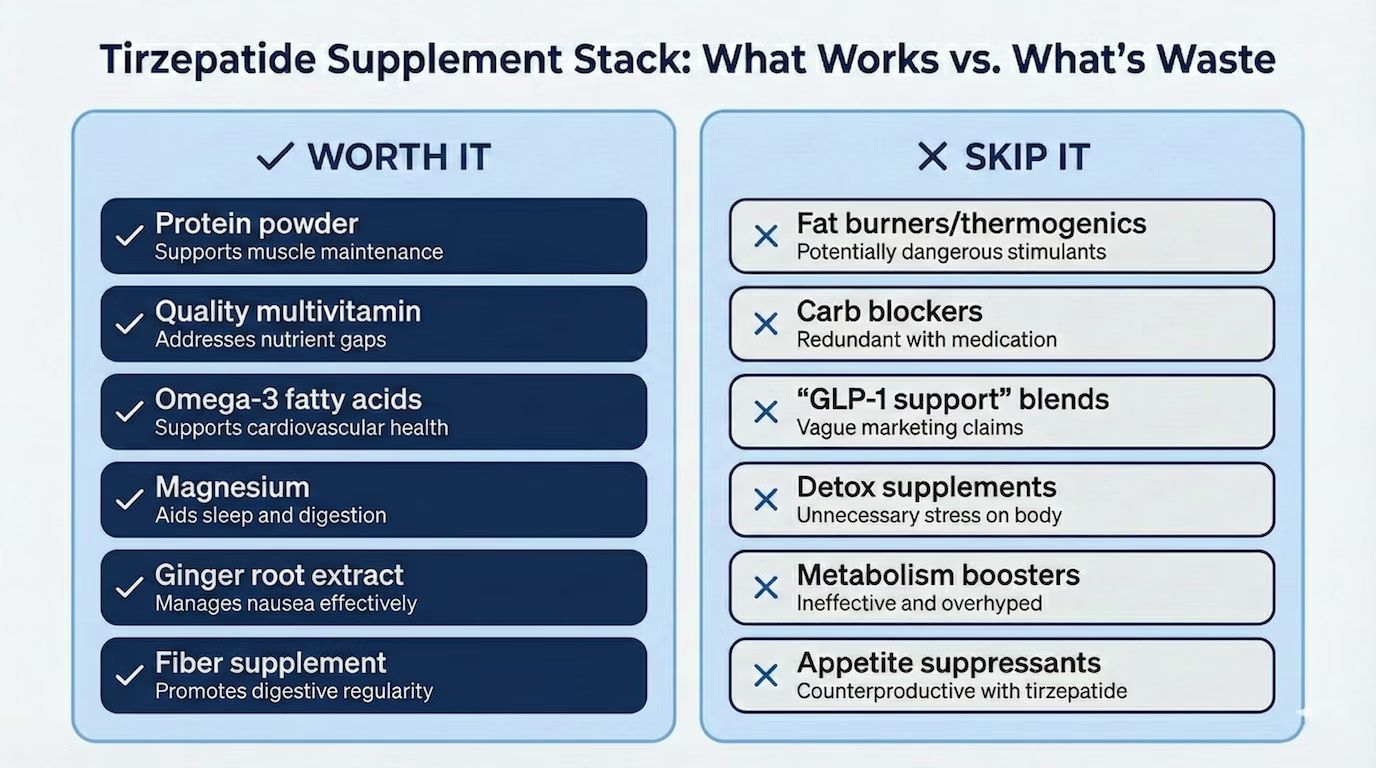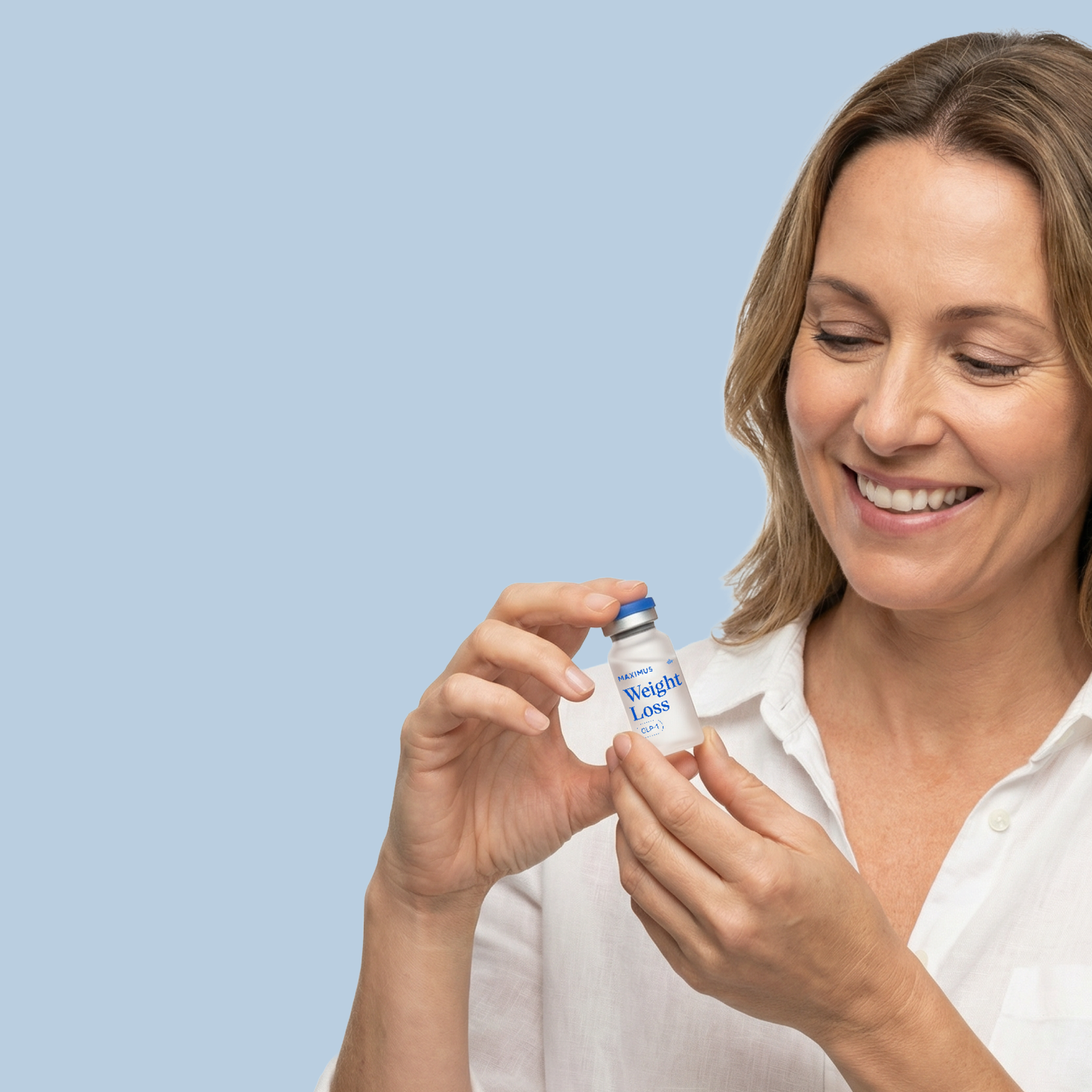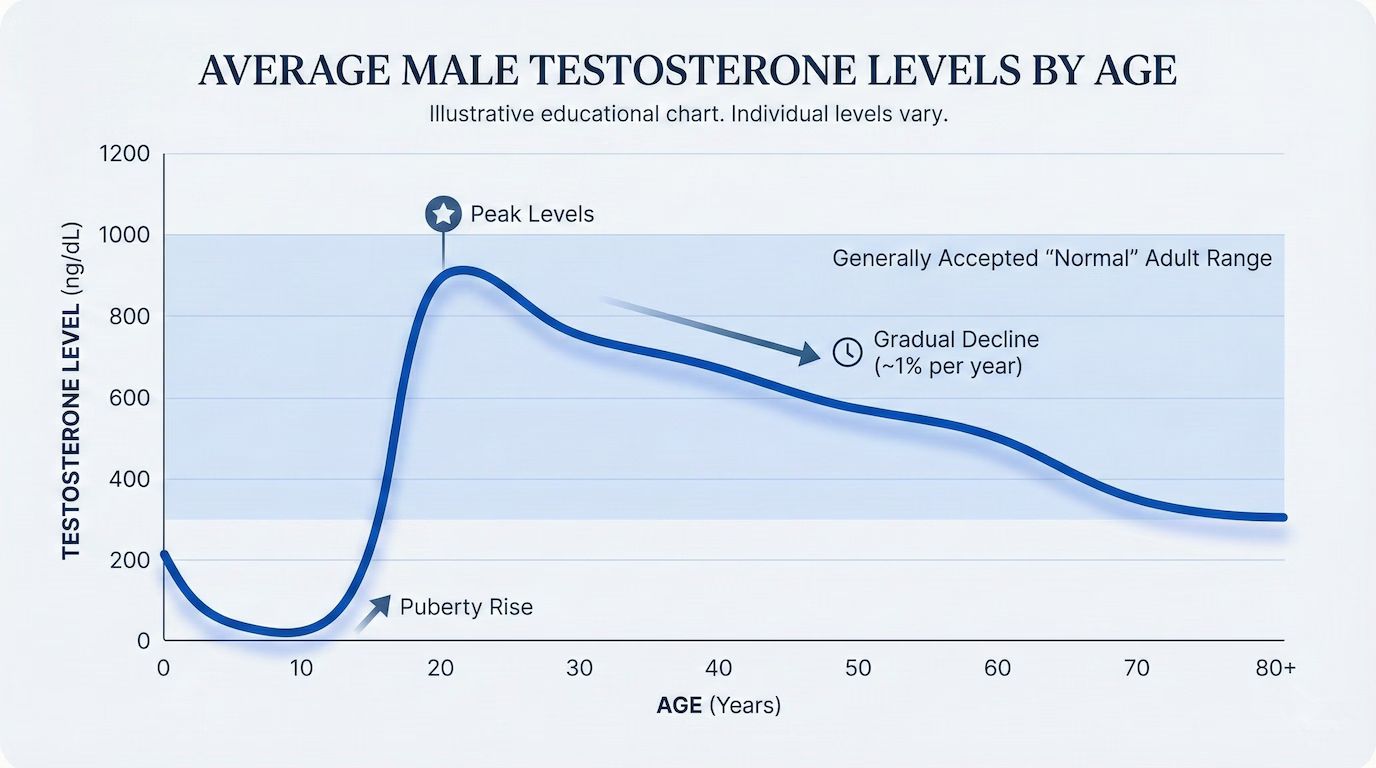Key takeaways:
- Testosterone levels naturally decline with age, at an average rate of 1% per year after the age of 30.
- Contrary to the common perception that low testosterone is a concern for older men, around 20% of men aged 15-39 may experience testosterone deficiency.
- Symptoms of low T include trouble with erections, low libido, low sperm count, hair thinning, muscle loss, decreased energy, and depression.
- Possible factors contributing to low testosterone levels might include obesity, poor diet, lack of exercise, inadequate sleep, marijuana use, and exposure to environmental toxins.
Testosterone has a big job. In growing boys, it contributes to the development of the penis and testes, and it helps deepen the voice during puberty. Continuing into adulthood, testosterone is thought to regulate your libido, bone mass, muscle mass, fat distribution, and the production of red blood cells and sperm. So, it shouldn’t come as a surprise that having low testosterone can make you feel lousy.
Most of us know testosterone levels decline naturally with age, but many think it’s only a problem for older men. The truth is, on average, testosterone drops around 1% per year after age 30, and for some men, it can happen even earlier.
For several decades, testosterone levels have been slowly and consistently declining in men of various age ranges, which may be the result of factors like rising rates of obesity, poor diet, excessive alcohol use, stress, and exposure to environmental toxins.
If you’re under 30 and struggling with issues like fatigue, low libido, and loss of muscle mass, find out if you’re dealing with low testosterone and what you can do to feel like yourself again.
What is low testosterone?
The American Urology Association (AUA) defines low testosterone as less than 300 nanograms per deciliter (ng/dL). But it’s important to note that many benchmark figures used to define “normal” testosterone levels are based on general population statistics that include men who may be elderly, overweight, or even sick. So, while 300 ng/dL may be adequate for the general population, it’s often not as suitable in younger, fit men.
For example, results from a 2019 study showed that median testosterone levels among fit, healthy men tend to fall between 13% and 24% higher than median testosterone levels that account for all men. Because of this, the researchers pointed out the need for better and more clear definitions of low testosterone and target testosterone levels. Data shows that a total testosterone level of 300 ng/dL only accounts for the 6.5 percentile of men, with most men having higher levels, on average.
Measuring your free testosterone, or bioavailable testosterone, may provide a more accurate picture. This type of testosterone refers to the form that is free to circulate and available for use in the body.
When diagnosing low testosterone, it’s also really important to take symptoms into account because a man can have normal testosterone levels on paper, but still be dealing with many common signs and symptoms of low testosterone like erectile dysfunction (ED), fatigue, and loss of strength and muscle mass. Even the AUA states that isolated testosterone level readings should not be diagnostic and that symptoms must also be present to diagnose low testosterone.
How common is low testosterone in your 20s?
According to research presented at the 2020 American Urological Association Virtual Experience, around 20% of men ages 15-39 have a testosterone deficiency. As for why this is happening, researchers aren’t entirely sure but pointed to some potential causes like obesity and increased body mass index (BMI), diet, lower levels of exercise, environmental toxins, and marijuana use.
Low testosterone symptoms
Signs of low testosterone vary from one person to another, but will generally include some combination of physical and mental symptoms, like low libido, loss of muscle mass and strength, and depression. Some of the most common symptoms of low testosterone in your 20s and beyond include:
- Trouble developing or maintaining an erection (ED) and fewer spontaneous erections (such as fewer incidences of “morning wood”)
- Decreases in libido
- Low sperm count
- Loss of muscle mass, bone density, and strength
- Increased body fat
- Breast growth
- Trouble falling or staying asleep
- Lasting fatigue
- Brain fog
- Depression
- Anxiety
It’s important to be aware that these symptoms can also be related to other health issues and underlying medical conditions. But having your testosterone levels tested is a good way to rule out low T as the culprit.
What causes low testosterone in your 20s?
There are many potential reasons why you might have low testosterone levels in your 20s, ranging from medical conditions to being overweight. Here are some potential causes of low testosterone in your 20s:
- Being overweight or obese: Research indicates that obesity stands out as the leading factor associated with low testosterone, playing a significant role in the age-related decrease in testosterone levels. Excess body fat will harbor more of an enzyme called aromatase, which converts testosterone into estrogen.
- Alcohol use: Alcohol has been shown to negatively affect the Leydig cells, which are the cells that produce and secrete testosterone in the testes. Additionally, heavy alcohol consumption has been associated with reduced testosterone levels.
- Poor sleep: In one study of healthy men whose sleep was restricted to 5 hours per night for a week,n, their daytime testosterone levels dropped by 10% to 15%. Some researchers suggest that the relationship between poor sleep and low testosterone may go both ways.
- Environmental toxins: Take, for example, Bisphenol A, or BPA, which is a chemical that’s used to make some types of plastic and has been shown to have negative effects on our hormonal health. Studies show BPA reduces testosterone synthesis and secretion, in some cases leading to lower T levels and lower sperm concentration.
- Medical conditions: This could include diseases, tumors, or disorders related to the hypothalamic or pituitary glands in the brain, testicle injuries, testicular tumors, diabetes, liver disease, AIDS, and cancer treatments. Inherited conditions like Down syndrome, Prader-Willi syndrome, Kallman’s syndrome, or Klinefelter syndrome can all cause low testosterone.
Low testosterone in 20s treatment
From testosterone replacement therapy (TRT) to enclomiphene citrate, various treatments can help raise your testosterone levels. Making lifestyle adjustments can also make a difference. Here’s a bit more information on treating low testosterone:
Testosterone replacement therapy (TRT)
For years, TRT has been the primary method used to increase testosterone levels in men. It’s typically effective and comes in many different forms, from gels and patches to injections and pills. For men suffering from primary hypogonadism, which is low testosterone caused by an issue at the testicular level, TRT remains the only option. However, TRT may not be the best choice for men who hope to have kids one day, as all forms of TRT are associated with a risk of infertility. Other side effects that can potentially occur with TRT include testicular shrinkage, an increased risk of cardiovascular issues, breast growth, acne, and worsening sleep apnea. Some forms, like oral TRT, have shown to have fewer side effects than injectable TRT, but you should always ask your doctor first about the full extent of side effects before starting this type of testosterone therapy.
Enclomiphene citrate
Enclomiphene citrate belongs to a class of drugs called selective estrogen receptor modulators (SERMs), which means they alter how estrogen works in your body. Enclomiphene works as an estrogen antagonist and blocks estrogen receptors in your brain. Since part of your testosterone is converted to estrogen everyday, when this blocking action occurs, your body thinks it needs to make more. So it increases production of gonadotropin hormone-releasing hormone (GnRH), which then leads to increased production of the hormones luteinizing hormone (LH) and follicle-stimulating hormone (FSH). LH then sends a signal to the Leydig cells in the testes to make more testosterone and FSH sends a signal to the Sertoli cells to make more sperm. It’s a chain reaction that results in more of your body’s own natural testosterone without the threat to infertility associated with TRT.
Learn about the Maximus Enclomiphene protocol for testosterone.
Healthy lifestyle changes
Beyond seeing a doctor for medication, there are a variety of changes you can make at home to start boosting your testosterone levels naturally. These include:
- Following a healthy diet with a variety of healthy fats, carbohydrates and protein.
- Ensure micronutrient intake is adequate, including Zinc and Vitamin D.
- Get at least 6-8 hours of sleep per night.
- Establishing a regular exercise routine with an emphasis on strength training.
- Maintaining a leaner body composition.
- Watching your stress levels and finding ways to address stress.
- Identifying underlying medical conditions.
- Trying to avoid environmental toxins.
Find more ideas on how to support your testosterone production and overall health at Maximus.
Disclaimer: The contents of this article, including, but not limited to, text, graphics, images, and other information, is for information purposes only and does not constitute medical advice. The information contained herein is not a substitute for and should never be relied upon for professional medical advice. The content is not meant to be complete or exhaustive or to be applicable to any specific individual's medical condition. You should consult a licensed healthcare professional before starting any health protocol and seek the advice of your physician or other medical professional if you have questions or concerns about a medical condition. Always talk to your doctor about the risks and benefits of any treatment. Never disregard or delay seeking professional medical advice or treatment because of something you have read on this site. Maximus does not recommend, endorse, or make any representation about the efficacy, appropriateness, or suitability of any specific test, products, procedures, treatments, services, opinions, healthcare providers or other information contained herein. Maximus is not responsible for, nor will they bear any liability for, the content provided herein or any actions or outcomes resulting from or related to its use.





